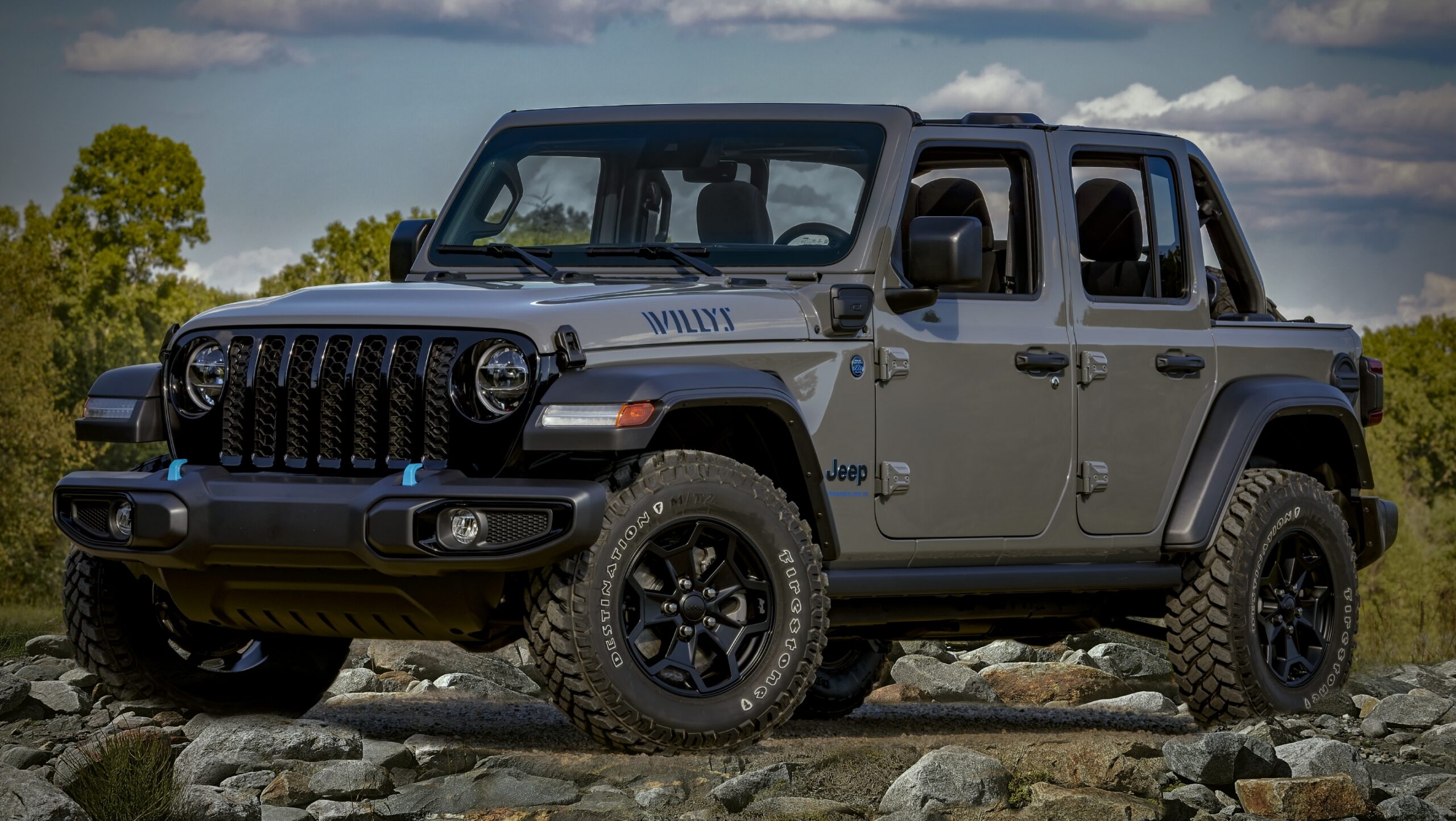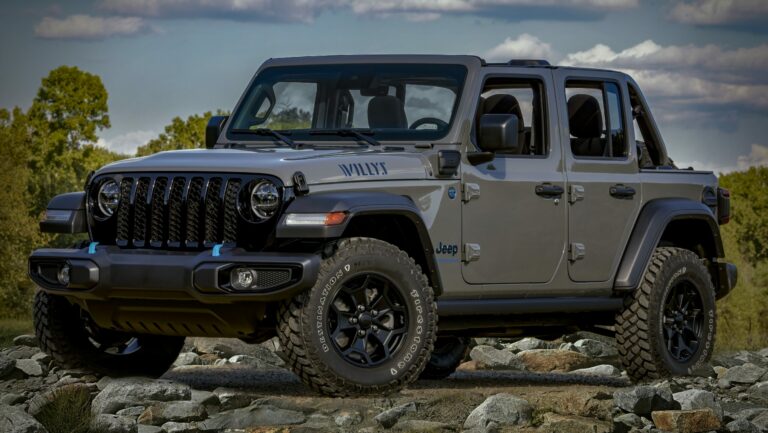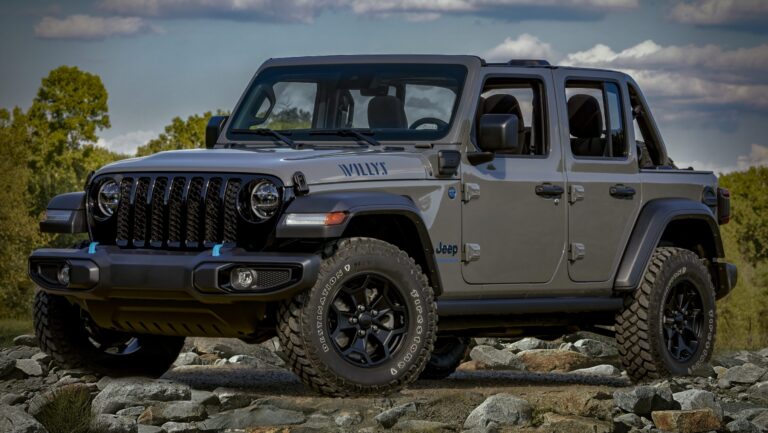Jeep TJ Dana 44 Rear Axle For Sale: Your Ultimate Buyer’s Guide
Jeep TJ Dana 44 Rear Axle For Sale: Your Ultimate Buyer’s Guide jeeps.truckstrend.com
Introduction: Unlocking Your TJ’s Full Potential
For any Jeep TJ Wrangler owner, the pursuit of enhanced off-road capability and rugged durability often leads to a crucial upgrade: the rear axle. While the stock Dana 35 rear axle that came standard on most TJs is adequate for light-duty use, serious off-road enthusiasts, those running larger tires, or anyone seeking greater peace of mind will inevitably look to replace it. This is where the legendary Jeep TJ Dana 44 rear axle comes into play. Renowned for its superior strength, robust design, and excellent aftermarket support, the Dana 44 is the holy grail for many TJ owners looking to fortify their drivetrain.
Jeep TJ Dana 44 Rear Axle For Sale: Your Ultimate Buyer’s Guide
This comprehensive guide is designed to be your go-to resource when navigating the market for a Jeep TJ Dana 44 rear axle for sale. We’ll delve into why it’s the preferred choice, what to look for, where to find one, and critical considerations for a successful upgrade. Whether you’re a seasoned Jeeper or new to the world of axle swaps, this article will equip you with the knowledge to make an informed decision and significantly elevate your TJ’s performance.
Why the Dana 44 is the Preferred Choice for TJ Owners
The decision to upgrade from a Dana 35 to a Dana 44 is almost a rite of passage for many TJ owners. The reasons are compelling and rooted in the inherent design differences between the two axles:
- Superior Strength: The most significant advantage of the Dana 44 is its increased strength. It features a larger ring gear (8.5 inches vs. 7.5 inches for the Dana 35) and a larger pinion, allowing for more contact area between the gears, which significantly reduces the risk of stripping teeth under heavy loads.
- Stronger Axle Shafts: While many Dana 35s came with 27-spline axle shafts, the Dana 44 typically uses 30-spline shafts, which are thicker and more resistant to bending and breaking, especially when running larger tires (33 inches and up) or aggressive off-road trails.
- Durability and Reliability: The overall construction of the Dana 44 is simply more robust. It’s designed to withstand the stresses of off-roading, rock crawling, and the added weight of aftermarket accessories. This translates to greater reliability and fewer trailside repairs.
- Better Aftermarket Support: Due to its popularity and widespread use across various vehicles, the Dana 44 boasts an extensive aftermarket. This means a vast array of available gear sets, lockers, axle shafts, and differential covers, making customization and repairs much easier and more affordable in the long run.
- Disc Brakes: Most factory TJ Dana 44s came equipped with disc brakes, a significant upgrade over the drum brakes found on most Dana 35s. Disc brakes offer superior stopping power, better heat dissipation, and easier maintenance.

For anyone serious about pushing their TJ’s limits, the Dana 44 provides the foundation needed to handle more aggressive terrain, larger tires, and the rigors of true off-road adventure without the constant worry of axle failure.
Understanding Different Types of TJ Dana 44 Rear Axles
When searching for a Jeep TJ Dana 44 rear axle for sale, it’s important to differentiate between the various types you might encounter:
- Factory TJ Dana 44: These are the most commonly sought-after axles for direct swaps. They were available as an option on certain TJ models, most notably the Rubicon (which came with front and rear Dana 44s, often with air lockers) and some Sport and Sahara models (typically with open differentials or limited-slip differentials). These are a direct bolt-in for any TJ, sharing the same width and mounting points. They nearly always came with disc brakes.
- Aftermarket Dana 44-Style Axles: Several reputable companies, such as Currie Enterprises, Dynatrac, G2 Axle & Gear, and RockJock, produce brand-new, heavy-duty Dana 44-style rear axles specifically for the TJ. While these offer superior strength and customization options (e.g., thicker tubes, stronger knuckles, custom widths), they are significantly more expensive than a used factory Dana 44. They are often referred to as "crate axles."
- Hybrid/Modified Dana 44s: You might also come across modified Dana 44s, perhaps from other vehicles, that have been adapted for a TJ. While potentially strong, these require more fabrication and expertise for installation, making a factory TJ Dana 44 the preferred choice for a straightforward swap.
Key Specifications to Look For:
Beyond identifying it as a Dana 44, pay attention to these critical details:
- Gear Ratio: The ratio of the ring and pinion gears (e.g., 3.73, 4.10, 4.56). This needs to match the gear ratio of your front axle, or you’ll need to re-gear both.
- Locker Type:
- Open Differential: Standard, allows wheels to spin at different speeds.
- Limited-Slip Differential (LSD): Transfers power to the wheel with more traction, but not a true locker.
- Selectable Locker (Air/Electric): Allows you to lock the differential for maximum traction when needed, then unlock it for street driving. Factory Rubicon Dana 44s came with air lockers (Tru-Lok).
- Brakes: Confirm if it has disc or drum brakes (most TJ Dana 44s are disc).
- Axle Shafts: While factory Dana 44s come with strong 30-spline shafts, some owners upgrade to chromoly shafts for even greater strength.
Where to Find a Jeep TJ Dana 44 Rear Axle For Sale
Finding a suitable Dana 44 can sometimes be a treasure hunt, but several avenues offer potential leads:
- Online Marketplaces:
- Craigslist/Facebook Marketplace: Excellent for local finds. Use specific search terms like "TJ Dana 44," "Jeep Wrangler Dana 44 rear axle." Be prepared to travel.
- Dedicated Jeep Forums: Websites like JeepForum.com, WranglerForum.com, and others often have "For Sale" sections where members list parts. These often provide more detailed descriptions and a community of knowledgeable buyers/sellers.
- eBay: Can be good for both local pickup and shipped items, but shipping an axle is expensive.
- Used Parts Dealers & Salvage Yards:
- Jeep-Specific Salvage Yards: Some yards specialize in Jeeps and often stock common upgrade parts like Dana 44s. Call ahead and ask for their inventory.
- 4×4 Specialty Shops: Many off-road shops deal in used parts or know where to source them.
- Local Off-Road Clubs: Networking with local Jeep clubs or off-road groups can yield excellent results. Members often upgrade their axles and sell their old ones, or they know someone who is.
- Aftermarket Retailers: While the focus here is on "for sale" (implying used), remember that new crate axles from companies like Currie or Dynatrac are always an option if your budget allows.
Patience is key. The right Dana 44 at a good price might not appear overnight.
What to Inspect When Buying a Used Dana 44 Axle
Buying a used axle requires careful inspection. Don’t rush the process. If possible, inspect it in person.
- Housing Condition:
- Bends/Warps: Look down the axle tubes from both ends. They should be perfectly straight. Any visible bend is a deal-breaker.
- Cracks: Check for cracks around the welds, spring perches, control arm mounts, and differential housing.
- Rust: Surface rust is common and generally fine, but excessive pitting or rust-through areas are red flags.
- Differential Cover: Check for leaks around the cover gasket. A dented cover isn’t necessarily a problem, but it indicates impact.
- Pinion Yoke: Grab the yoke and try to move it up/down and side-to-side. Any significant play indicates worn pinion bearings, which means a costly rebuild. A slight rotational play is normal (backlash).
- Axle Shafts (If Visible/Included):
- Straightness: Roll them on a flat surface if removed.
- Splines: Check the splines for twisting or damage.
- Brakes (If Included):
- Calipers: Check for leaks, seized pistons (if possible).
- Rotors/Pads: Assess wear. While replaceable, knowing their condition helps negotiate price.
- Parking Brake: Check if components are present and appear functional.
- Gears: This is hard to assess without opening the differential or hearing it run.
- Ask about the gear ratio. If you’re buying remotely, ask for clear pictures of the tag or painted ratio on the gears.
- Ask about any noises. If possible, spin the pinion by hand and listen for grinding or excessive slop.
- Locker (If Applicable):
- Air Lockers: Ask if the air line and solenoid are included and if it holds air.
- Electric Lockers: Ask if the wiring harness is included and if it powers up.
- Mounting Points: Ensure the spring perches, shock mounts, and control arm mounts are intact, not bent, and free from severe rust or cracks. Check for any non-factory modifications that might not align with your TJ.
- Fluid: If possible, ask to check the differential fluid. Clean fluid indicates good maintenance; milky or metallic fluid indicates problems.
Don’t be afraid to ask questions, request more photos, or even a video of the axle. If the seller is hesitant, it’s a warning sign.
Installation Considerations and Potential Challenges
While a factory TJ Dana 44 is a direct bolt-in for most TJs, there are still crucial aspects to consider:
- Gear Ratio Matching: This is paramount. Your front axle’s gear ratio must match the rear Dana 44’s ratio. If they don’t, your transfer case will bind, and you’ll damage your drivetrain. If they don’t match, you’ll need to re-gear one or both axles.
- Brake Lines: While the connections are similar, the routing or length of hard lines might differ slightly, and you’ll need to ensure your existing flexible brake lines are compatible.
- Parking Brake Cables: Factory TJ Dana 44s typically used different parking brake cables than Dana 35s. You’ll likely need to source the correct Dana 44 cables.
- U-Joint/Driveshaft Compatibility: Ensure your driveshaft’s U-joint size matches the Dana 44’s pinion yoke. Most TJs will be fine, but it’s worth double-checking.
- Fluid: Always drain and refill the differential with fresh gear oil (and friction modifier if it’s an LSD) after installation.
- Bleeding Brakes: If you’re installing disc brakes where you previously had drums, or simply replacing an axle, you’ll need to properly bleed the entire brake system.
- Professional Installation vs. DIY: While many DIYers can perform an axle swap, it requires proper tools (jack stands, floor jack, torque wrench, brake bleeding kit, etc.) and a good understanding of automotive mechanics. If unsure, professional installation is a wise investment.
Upgrades and Modifications for Your Dana 44
Once you’ve secured your Dana 44, the customization options are vast:
- Stronger Axle Shafts: For extreme use, chromoly axle shafts are a popular upgrade, providing even greater strength than the stock 30-spline shafts.
- Aftermarket Differential Covers: These are thicker and more robust, offering better protection against rocks and impacts. Many also hold more fluid for better cooling.
- Lockers: If your Dana 44 comes with an open differential, adding a selectable locker (like ARB Air Locker or Eaton E-Locker) or an automatic locker (like a Detroit Locker) will dramatically improve off-road traction.
- Re-gearing: If you plan on running significantly larger tires (e.g., 35 inches or more), re-gearing to a lower ratio (e.g., 4.88, 5.13) will restore lost power and improve drivability.
- Trussing: For hardcore rock crawling, a truss welded to the axle tubes adds significant rigidity and prevents bending under extreme stress.
- Disc Brake Upgrades: While most TJ Dana 44s have disc brakes, performance upgrades (larger rotors, multi-piston calipers) are available for enhanced stopping power.
Practical Advice and Actionable Insights
- Set a Budget: Axle prices vary widely based on condition, included components (gears, locker), and location. Have a clear budget in mind.
- Be Patient: The perfect Dana 44 might not appear immediately. Good deals on well-maintained axles take time to find.
- Ask Questions: Don’t be shy. Ask about the axle’s history, the mileage it’s seen, why it’s being sold, and any known issues.
- Get Pictures/Videos: If buying remotely, insist on detailed photos from multiple angles, focusing on critical areas like welds, mounts, and the differential cover. A video showing the pinion turning can also be helpful.
- Verify Credibility: If buying from an individual, check their online presence (forum history, Facebook profile). If buying from a business, check reviews.
- Factor in Shipping: Axles are heavy. Shipping costs can be substantial and sometimes make a "good deal" not so good. Local pickup is almost always preferred.
- Consider a Professional Inspection: If you’re serious about a high-value axle and are unsure about your inspection skills, consider hiring a local mechanic or off-road shop to give it a once-over.
Estimated Price Guide: Jeep TJ Dana 44 Rear Axle For Sale
This table provides a general estimate for used Jeep TJ Dana 44 rear axles. Prices can vary significantly based on condition, mileage, included components (locker, specific gear ratio), and regional demand.
| Item | Condition | Key Features | Estimated Price Range (USD) | Notes





